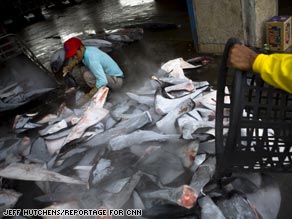5 ways to make eating organic foods affordable
Chemically-treated produce shipped cross-country happens to be affordable. For families on a budget, buying organically grown local fruit and vegetables is good in theory but in reality, these goods aren’t always priced low enough to make the decision easy.
“If it’s certified organic, it might be a little bit more because of supply and demand and because of the amount of work that goes into it and the quality of the product,” said Michael Wall of Georgia Organics.
 It’s not a lost cause, though. Preferring to prepare more wholesome ingredients doesn’t mean you have to be rich. There are ways to buy and eat reasonably-priced organic goods.
It’s not a lost cause, though. Preferring to prepare more wholesome ingredients doesn’t mean you have to be rich. There are ways to buy and eat reasonably-priced organic goods.
– Grow your own: This is the best time of year to plant summer vegetables like squash, as well as potatoes, tomatoes, lettuces and more. Seed sales have skyrocketed as backyard gardeners have put their hands in soil.
– Wholesome Wave Foundation: Started to benefit low income households, Wholesome Wave doubles the cash value of purchases made with federal food stamps and WIC. So $2 gets you $4 worth of groceries. The East Atlanta Village Farmers Market, Morningside Farmers Market and the On-Site Market at Truly Living Well Urban Farm are all participants in the program.
“It’s a great safety net for Georgia’s most impoverished,” Wall said. “Often, they have the least amount of access to fresh vegetables…It’s an economic incentive to buy fresh, wholesome food.”
– Join a Community Supported Agriculture group: Commonly known as CSAs, a mixed box of produce is brought to you (either at central locations or delivery) each week. While not cheaper than what you’ll find at the average grocery store, it is less expensive than high-end stores like Whole Foods or Harry’s.
Charlotte Swancy from Riverview Farms went on a comparison shopping trip recently and spent about $8 more at Whole Foods than a CSA customer of her farm would pay for the same products. Patrica Gladney of Farmers Fresh CSA said co-ops, in which farms work together to provide even more variety year-round, said their prices are comparable as well. At Lynn Pugh’s Cane Creek Farm, customers can also pick all of the herbs they want.
“It can be cost effective if you eat everything you get and you cook,” Pugh said.
– Work-share programs: You’ve seen the signs that read, ‘Will Work For Food.’ In this case, the workers mean it. Volunteer on a farm and in exchange, get a box of the food they sell.
– Community Gardens: Neighbors are helping neighbors, banning together to grow community gardens.
“You know your food is fresh; it hasn’t traveled great distances or come from another country,” Swancy said. “And you’re supporting local farmers.”
(from the Atlanta Journal-Constitution)






